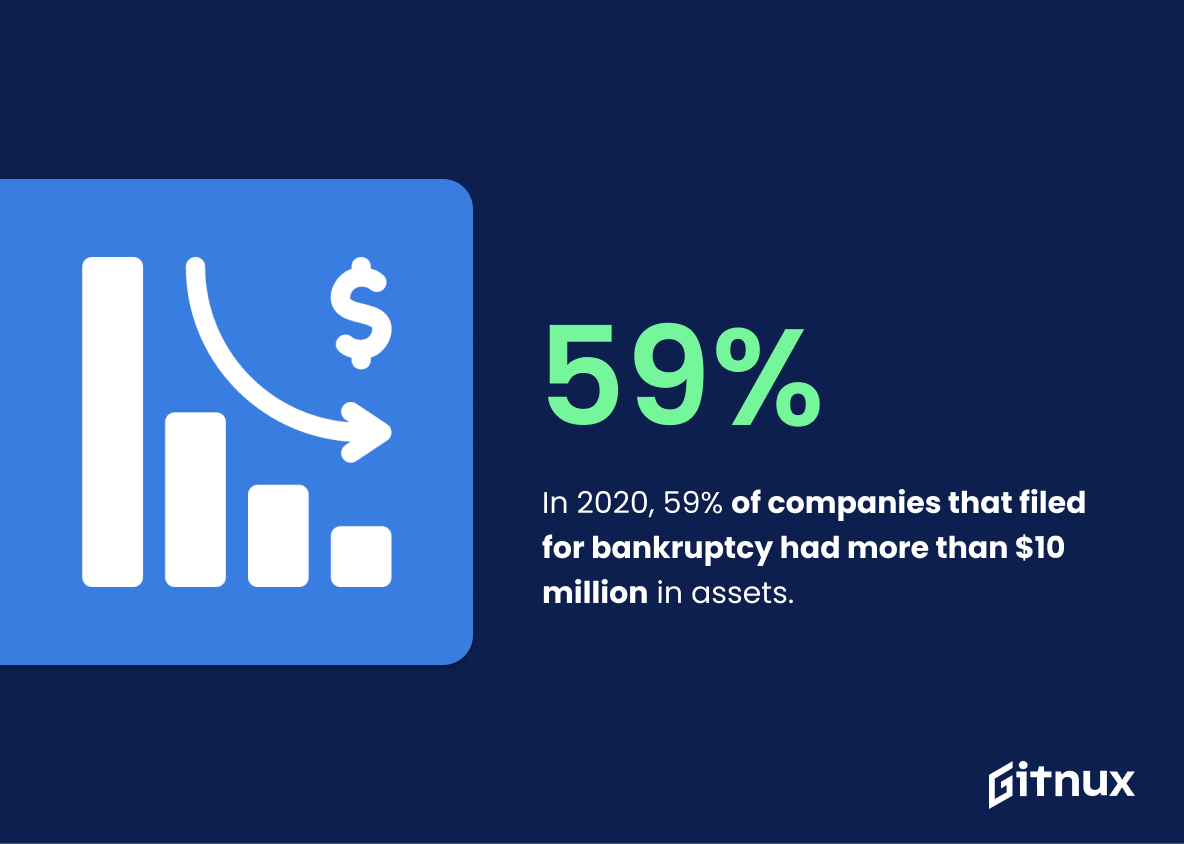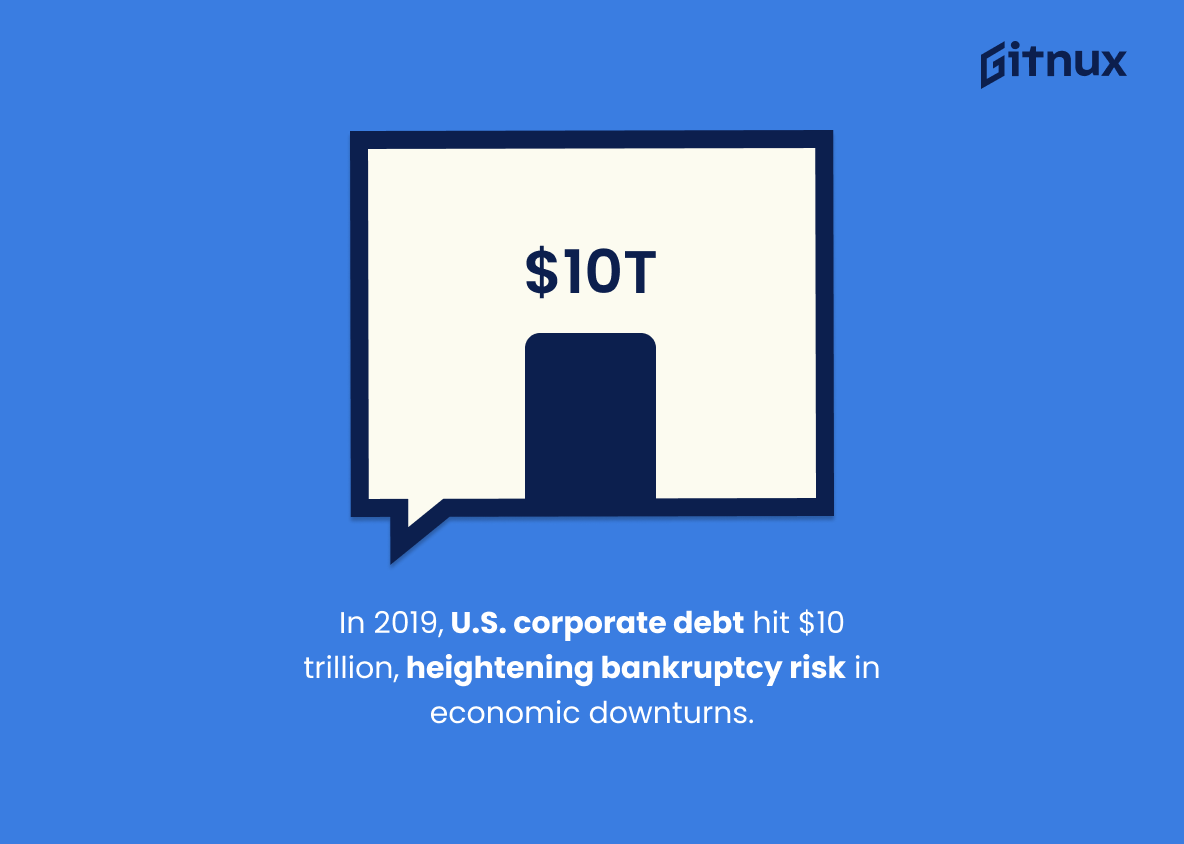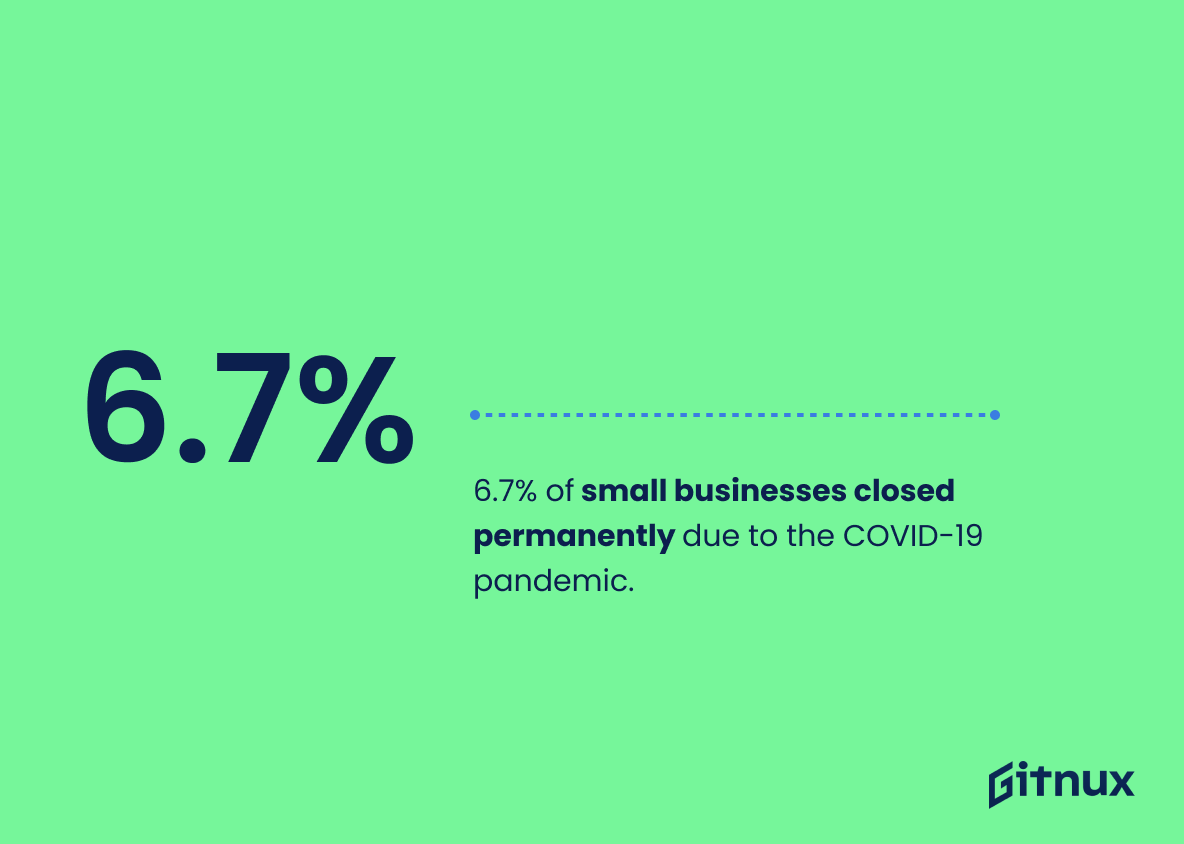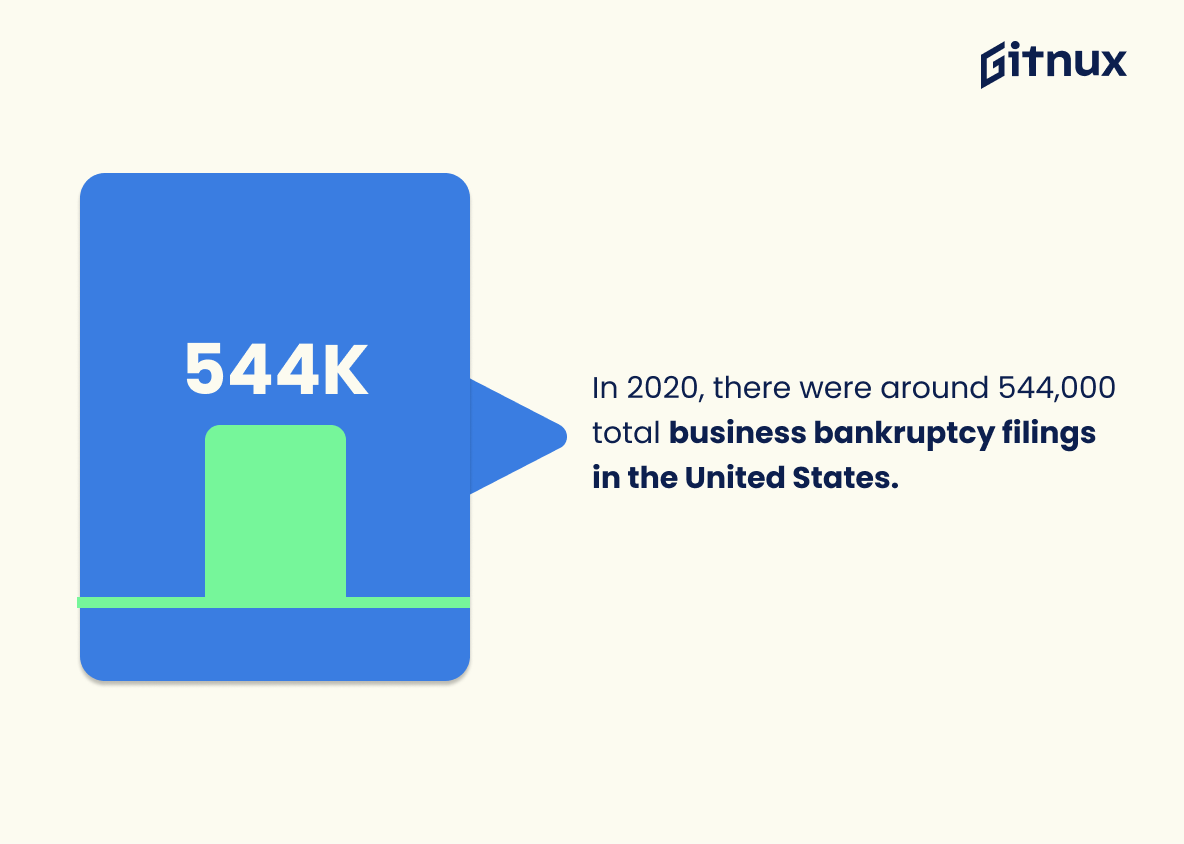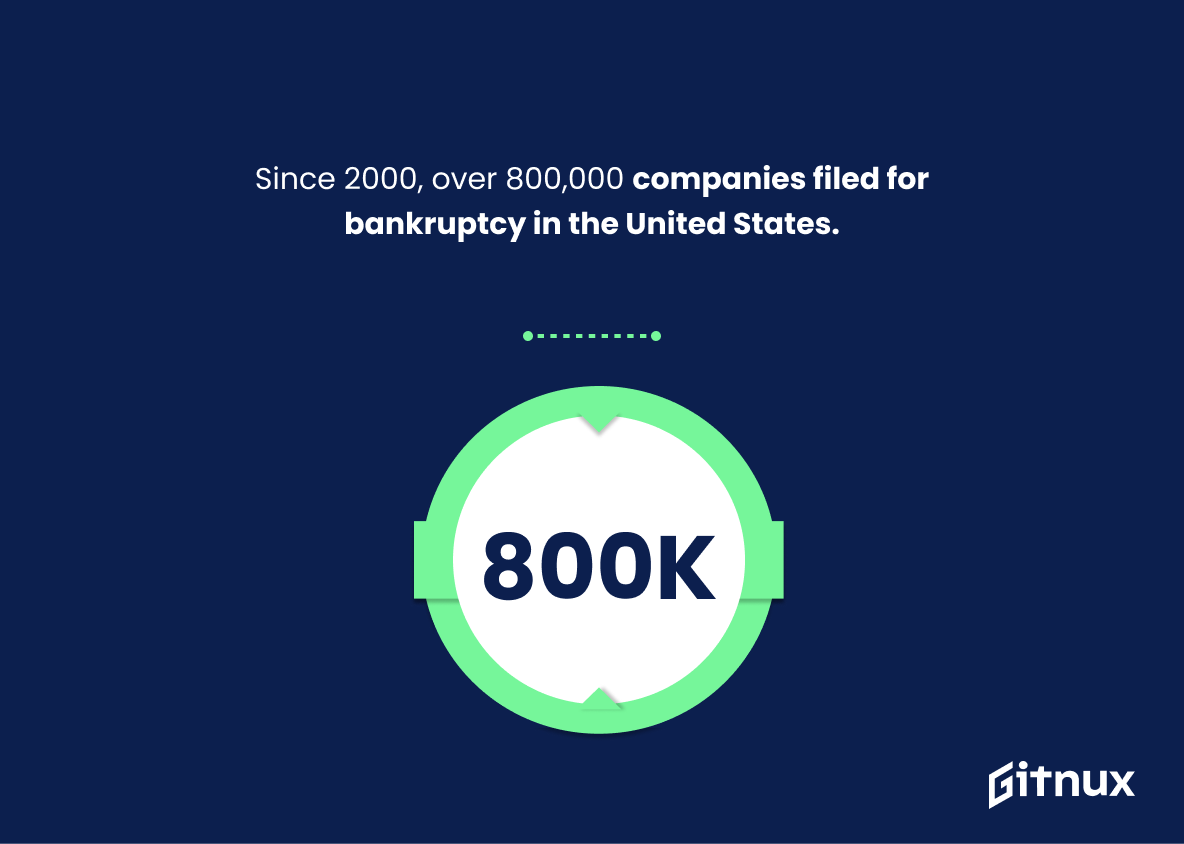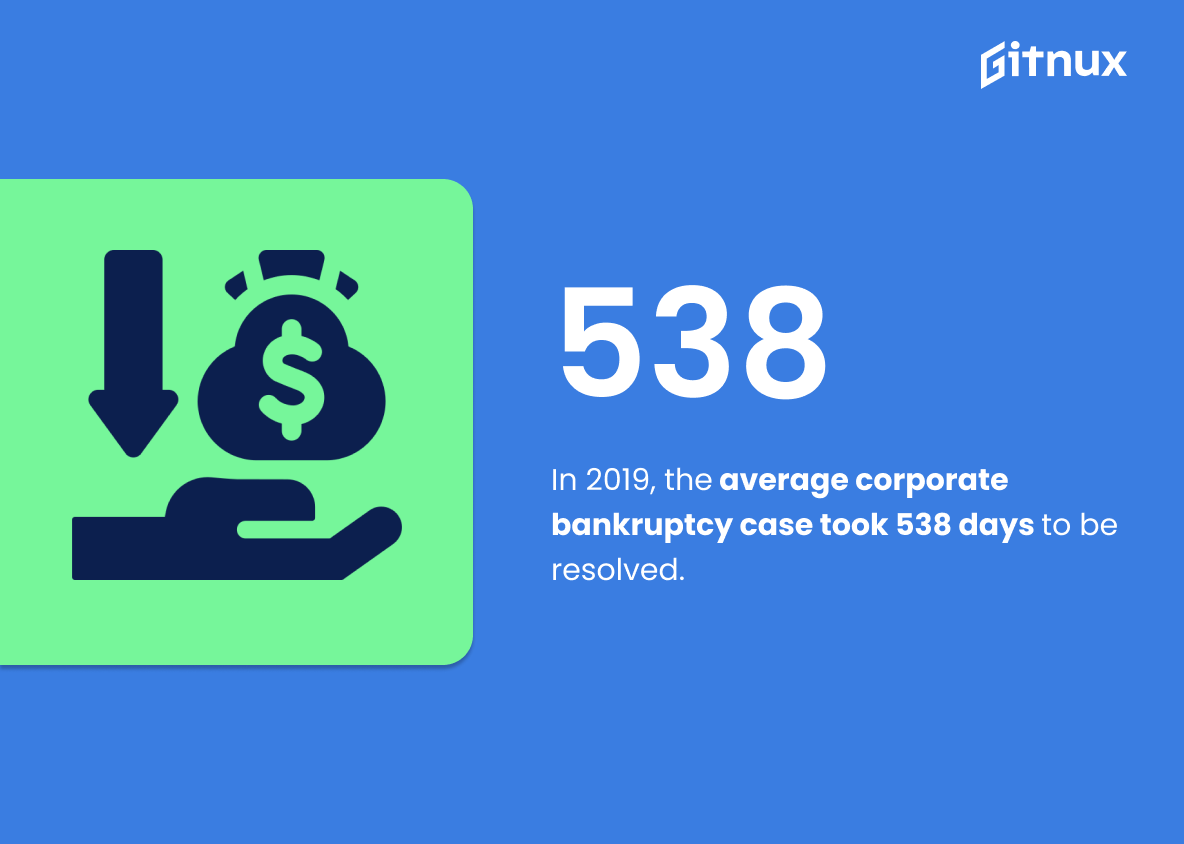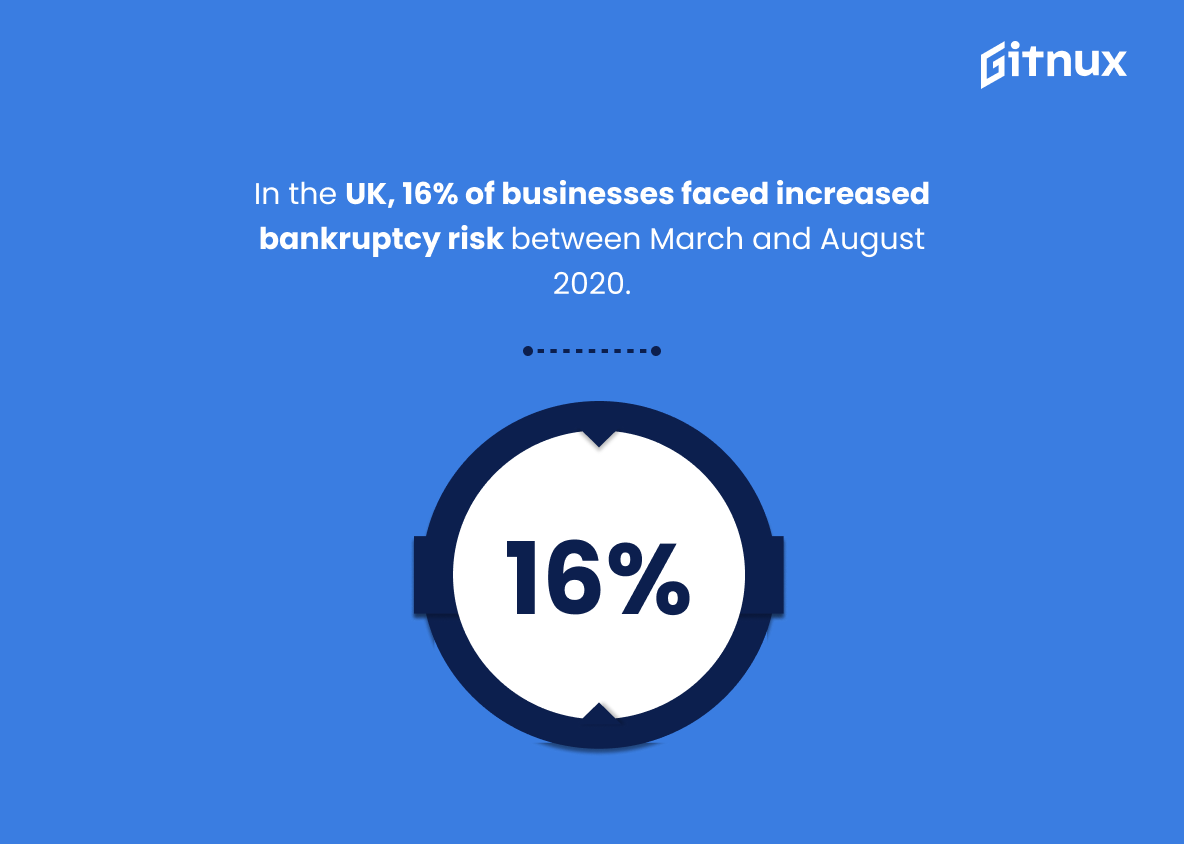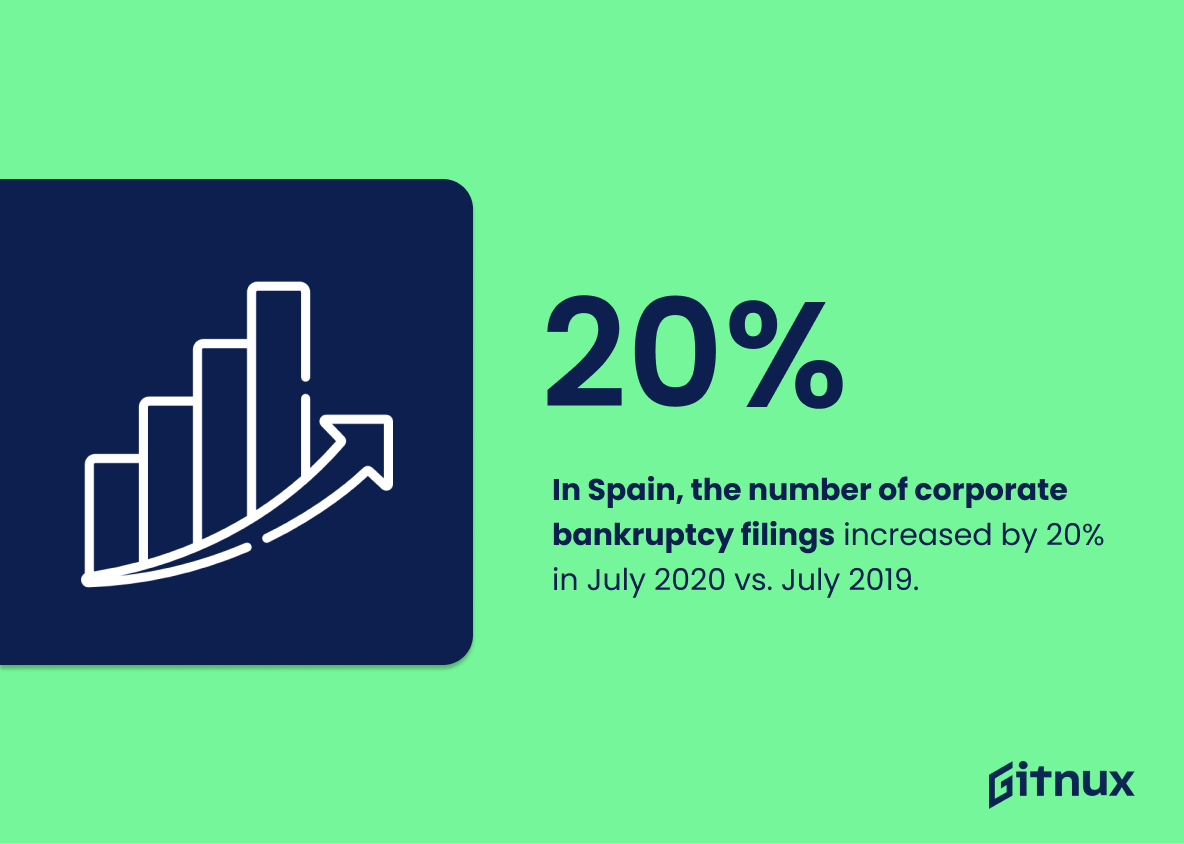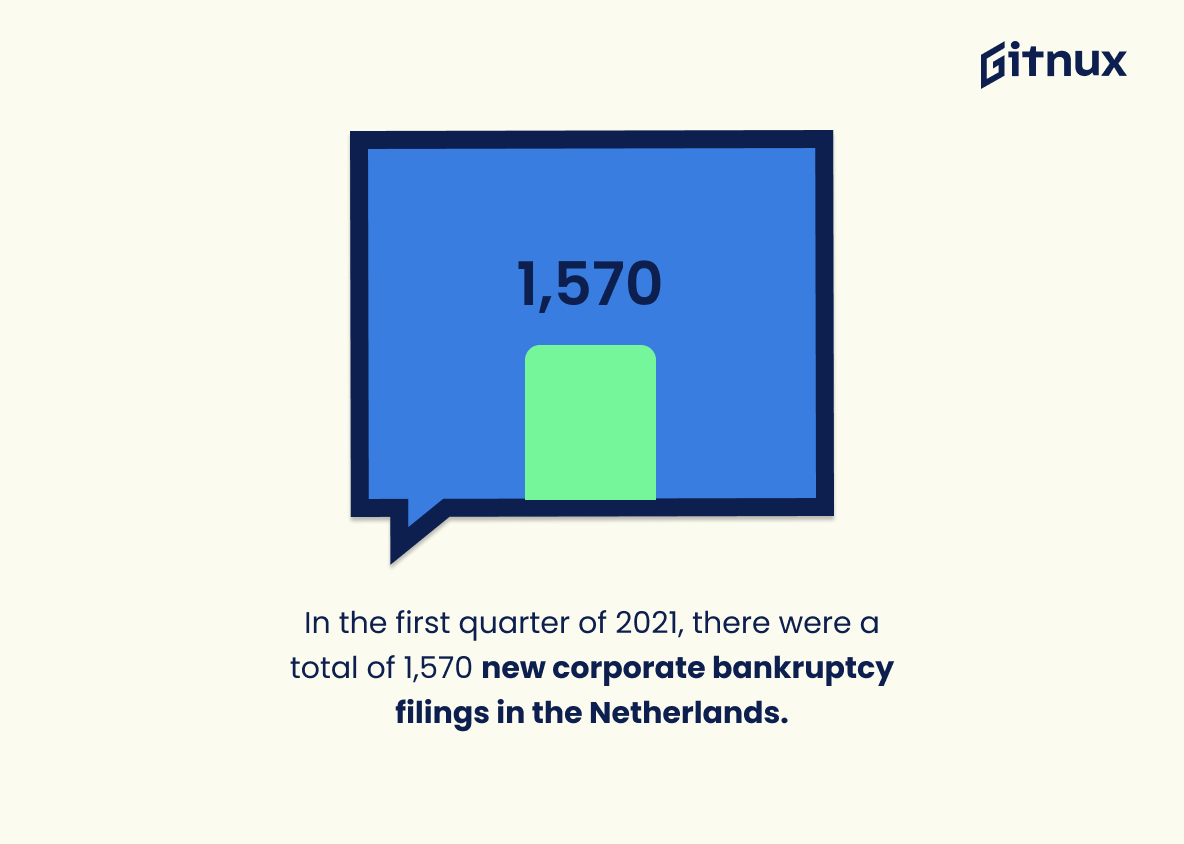The COVID-19 pandemic has had a devastating impact on businesses around the world, leading to an unprecedented rise in corporate bankruptcies. This blog post will explore some of the latest statistics related to corporate bankruptcy filings across different countries and industries. We’ll look at data from 2020 and 2021 that shows how many companies have filed for bankruptcy, what sectors are most affected by it, and other factors contributing to this trend. Additionally, we’ll discuss potential solutions for preventing further business failures due to economic downturns caused by the pandemic or other external forces.
This statistic is a stark reminder of the economic impact of the COVID-19 pandemic. It shows that the number of corporate bankruptcy filings in the U.S. has skyrocketed in 2020, indicating that many businesses have been unable to survive the economic downturn. This is an important statistic to consider when discussing corporate bankruptcy statistics, as it provides a clear picture of the current state of the economy.
In the first half of 2020, Chapter 11 bankruptcy filings in the U.S. increased by 26% compared to the same period in 2019.
This statistic is a telling indication of the economic impact of the COVID-19 pandemic. It demonstrates that the number of companies filing for Chapter 11 bankruptcy protection has risen significantly in the first half of 2020, compared to the same period in 2019. This is a clear sign that businesses are struggling to stay afloat in the current economic climate, and that the pandemic has had a significant impact on corporate finances. This statistic is an important reminder of the need for businesses to be prepared for the economic challenges posed by the pandemic, and to take steps to protect their financial health.
Corporate Bankruptcy Statistics Overview
In 2020, 59% of companies that filed for bankruptcy had more than $10 million in assets.
This statistic is a telling indication of the financial struggles that companies with substantial assets can face. It highlights the fact that even companies with significant resources can find themselves in a position of insolvency, and that no business is immune to the risks of bankruptcy. This statistic is an important reminder that companies of all sizes must remain vigilant in their financial management and planning.
In 2019, total U.S. corporate debt reached $10 trillion, increasing the risk of bankruptcy during an economic downturn.
This statistic is a stark reminder of the potential consequences of a financial downturn. With corporate debt at an all-time high, businesses are more vulnerable to bankruptcy in the event of an economic downturn. This statistic serves as a warning to companies to be mindful of their debt levels and to take steps to protect themselves from the potential risks of a recession.
6.7% of small businesses closed permanently due to the COVID-19 pandemic.
This statistic is a stark reminder of the devastating impact the COVID-19 pandemic has had on small businesses. It highlights the need for more support and resources to help small businesses stay afloat during this difficult time. It also serves as a warning to other businesses to be prepared for the possibility of bankruptcy in the future.
In 2020, there were around 544,000 total business bankruptcy filings in the United States.
This statistic is a stark reminder of the economic impact of the pandemic on businesses in the United States. It highlights the sheer number of businesses that have been forced to file for bankruptcy due to the financial strain of the pandemic. This statistic is an important indicator of the economic health of the country and should be taken into consideration when discussing corporate bankruptcy statistics.
Since 2000, over 800,000 companies filed for bankruptcy in the United States.
This statistic is a stark reminder of the harsh reality of corporate bankruptcy in the United States. It paints a vivid picture of the sheer number of companies that have been forced to close their doors due to financial hardship since the turn of the century. It serves as a reminder of the importance of financial planning and risk management for businesses of all sizes.
In 2019, the average corporate bankruptcy case took 538 days to be resolved.
This statistic is a telling indication of the complexity of corporate bankruptcy cases and the amount of time it takes to resolve them. It is an important piece of information to consider when discussing corporate bankruptcy statistics, as it provides insight into the amount of time and resources that are required to successfully navigate the process.
Energy sector accounted for 20% of bankruptcy filings in 2020, the highest among all industries.
The energy sector’s high rate of bankruptcy filings in 2020 is a telling sign of the economic impact of the pandemic. It is indicative of the financial strain that businesses in this sector have been facing, and the difficulties they have had in navigating the economic downturn. This statistic is a stark reminder of the need for businesses to be prepared for unexpected events and to have the resources to weather difficult times.
Canada saw a 9.6% increase in the number of corporate bankruptcies between January and November 2020.
This statistic is a stark reminder of the economic impact of the COVID-19 pandemic on Canadian businesses. It highlights the need for businesses to be prepared for the unexpected and to have a plan in place to weather any economic storms that may come their way. It also serves as a warning to businesses to be aware of the risks associated with corporate bankruptcy and to take steps to protect themselves from such a fate.
In 2020, Asia-Pacific countries experienced a 19% increase in corporate defaults.
This statistic is a stark reminder of the economic impact of the pandemic on Asia-Pacific countries. It highlights the need for businesses to be prepared for the possibility of corporate defaults, and the importance of having a plan in place to manage the financial fallout of such an event. It also serves as a warning to investors to be aware of the risks associated with investing in companies in the region.
In the UK, 16% of businesses faced increased bankruptcy risk between March and August 2020.
The statistic that 16% of businesses in the UK faced increased bankruptcy risk between March and August 2020 is a stark reminder of the economic impact of the pandemic. It highlights the need for businesses to be aware of the risks of bankruptcy and to take steps to protect themselves. This statistic is a powerful illustration of the importance of understanding the potential financial consequences of the pandemic and the need for businesses to be prepared.
In Spain, the number of corporate bankruptcy filings increased by 20% in July 2020 compared to the same month in 2019.
This statistic is a telling indication of the economic impact of the COVID-19 pandemic in Spain. The 20% increase in corporate bankruptcy filings in July 2020 compared to the same month in 2019 is a stark reminder of the financial strain businesses are facing due to the pandemic. This statistic is an important piece of information to consider when discussing corporate bankruptcy statistics, as it provides insight into the current economic climate in Spain.
In the first quarter of 2021, there were a total of 1,570 new corporate bankruptcy filings in the Netherlands.
This statistic is a stark reminder of the economic impact of the pandemic on businesses in the Netherlands. It highlights the need for companies to take proactive steps to protect themselves from the financial risks associated with corporate bankruptcy. It also serves as a warning to other businesses to be aware of the potential for bankruptcy and to take steps to mitigate the risks.
Conclusion
The data presented in this blog post paints a clear picture of the current state of corporate bankruptcy filings around the world. In 2020, U.S. corporate bankruptcies reached an 8-year high with 7,128 filings and 9% of businesses at risk due to pandemic-related issues. Chapter 11 bankruptcy filings increased by 26%, while 59% of companies that filed for bankruptcy had more than $10 million in assets. The retail industry ranked second among all industries with 39 bankruptcies, and total U.S corporate debt was estimated to be near $10 trillion in 2019 – increasing the risk during economic downturns even further. Small business closures due to COVID-19 were also significant, as 6.7% closed permanently between March and August 2020 alone; 544 thousand total business bankruptcies occurred throughout the year across America too..
In Europe, 10% of companies faced potential insolvency risks while Canada saw a 9 .6 % increase from January through November 2020 compared to previous years’ figures; Australia reported 48 percent attributed to poor strategic management decisions made within their corporations whereas Asia Pacific countries experienced 19 percent increases overall on defaulted debts owed by their respective firms respectively . Lastly , Spain recorded 20 percent higher rates when comparing July 2019 versus July2020 statistics ; Netherlands witnessed 1 570 new cases being opened up just within Q1 2021 itself .
It is evident that many businesses have been affected negatively by both global economic conditions as well as those caused directly or indirectly from Covid 19 related matters over recent times , leading them into financial distress which has resulted in numerous filing for Bankruptcy protection worldwide
References
0. – https://www.spglobal.com
1. – https://www.daytranslations.com
2. – https://www.ic.gc.ca
3. – https://www.uscourts.gov
4. – https://www.cbs.nl
5. – https://www.cnbc.com
6. – https://www.statista.com
7. – https://www.richmond.com
8. – https://www.ons.gov.uk
9. – https://www.axesor.es
10. – https://www.forbes.com
